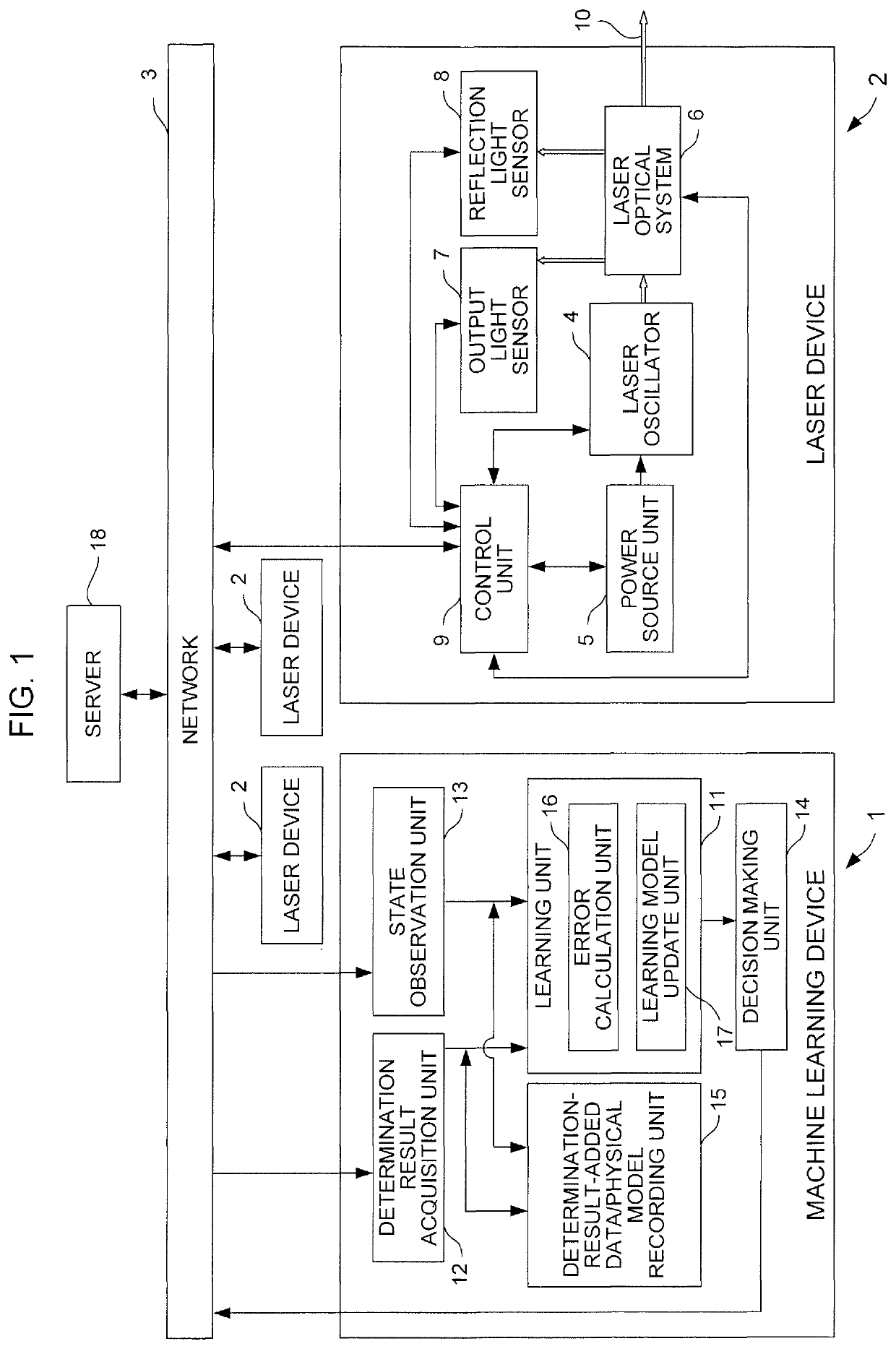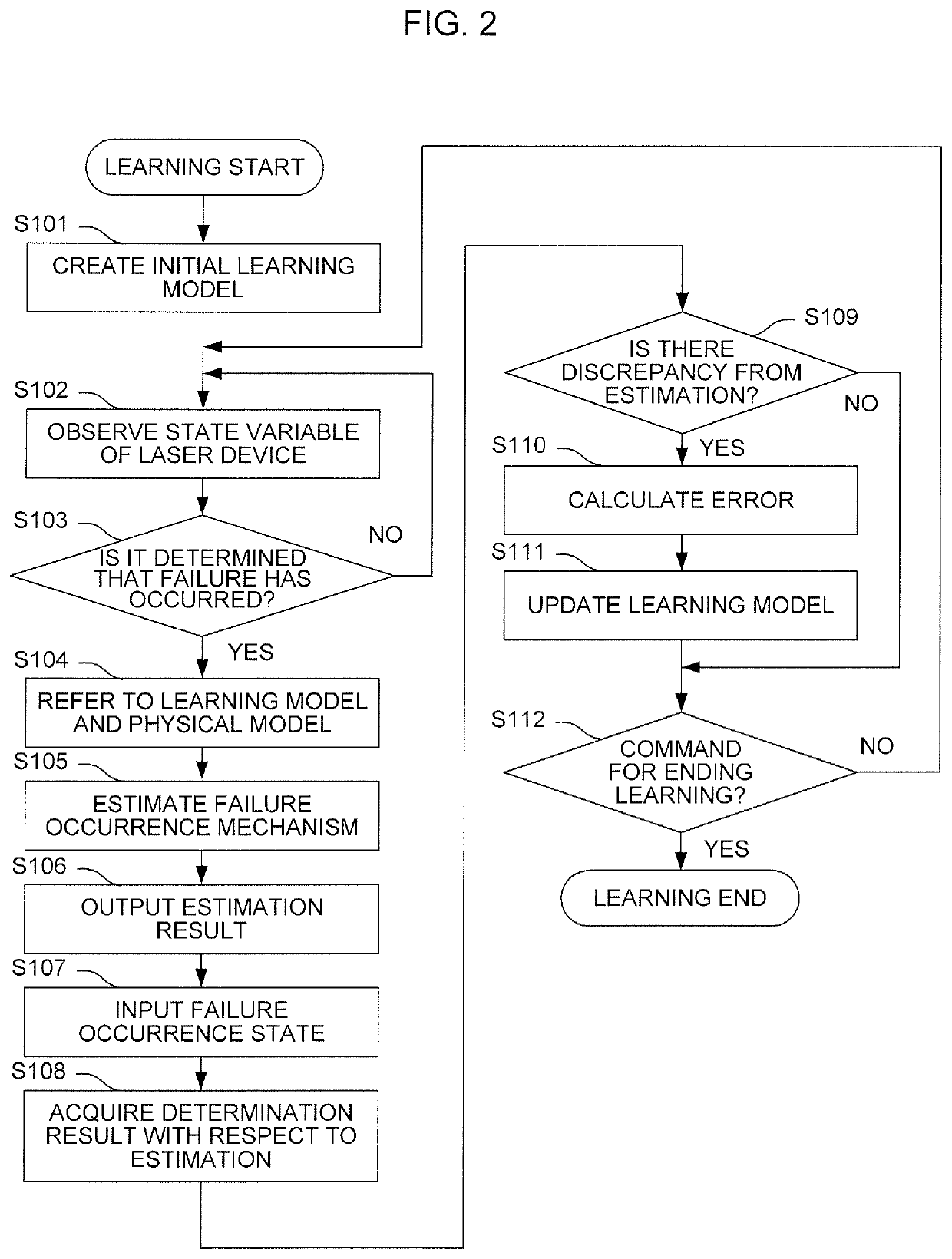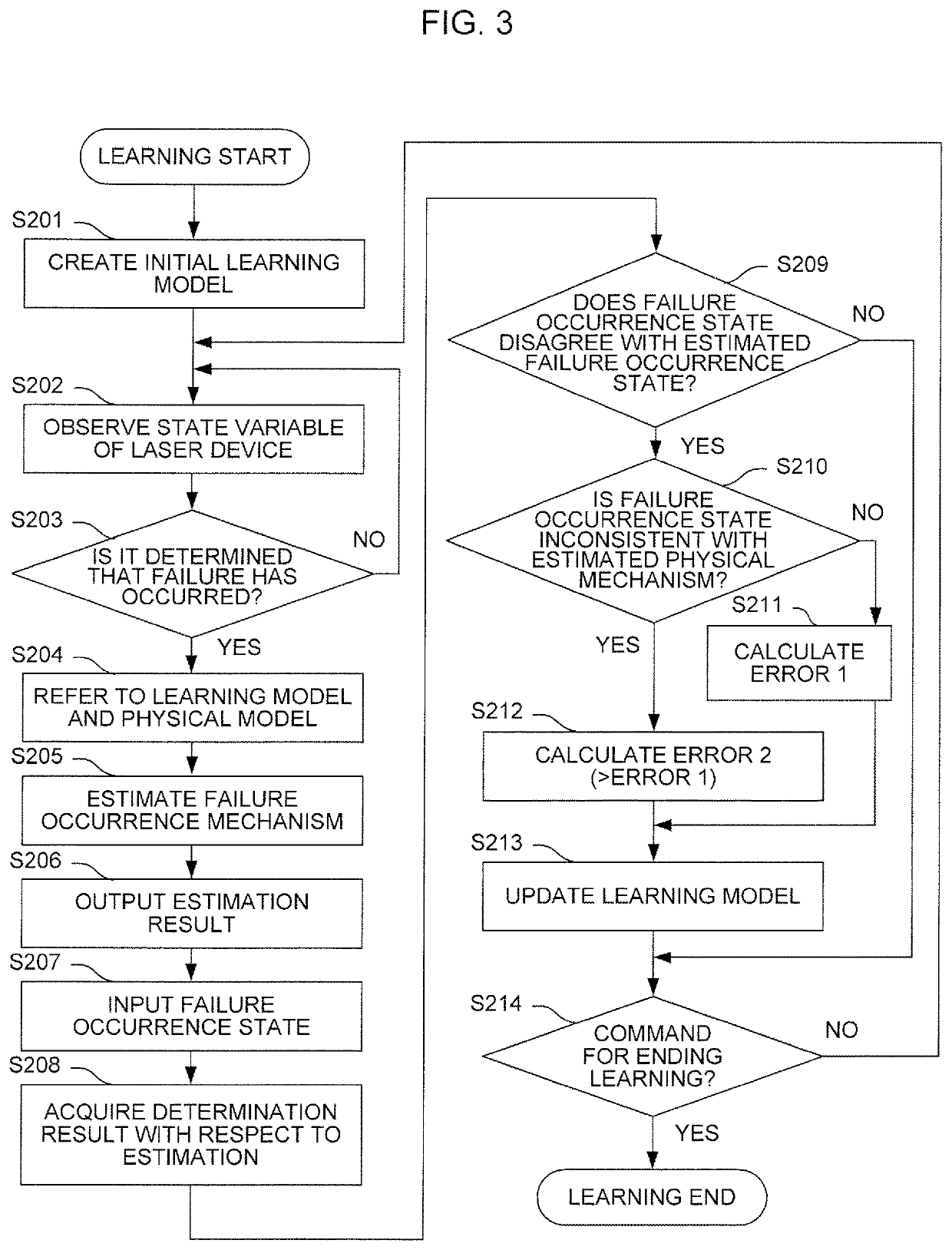Machine learning device learning failure occurrence mechanism of laser device
a laser device and machine learning technology, applied in the field of machine learning devices, can solve the problems of not performing machine learning for quantitative failure occurrence mechanisms of apparatus for diagnosing abnormalities, insufficient accuracy, and large quantity of failure data collection, etc., to achieve the effect of enhancing learning accuracy, enhancing learning progress speed, and prolonging learning tim
- Summary
- Abstract
- Description
- Claims
- Application Information
AI Technical Summary
Benefits of technology
Problems solved by technology
Method used
Image
Examples
first embodiment
[0072]FIG. 1 is a block diagram illustrating the conceptual configuration of a machine learning device 1 according to a first embodiment of the present invention and illustrating a state in which the machine learning device 1 is connected with three laser devices 2 via a network 3. The laser device 2 positioned right end among the three laser devices 2 is illustrated in a block diagram which illustrates the conceptual configuration of the laser device.
[0073]The laser device 2 includes a laser oscillator 4, a power source unit 5, a laser optical system 6, an output light sensor 7, a reflection light sensor 8, and a control unit 9. The power source unit 5 supplies driving current to the laser oscillator 4. The laser optical system 6 includes a machining head for irradiating a workpiece (not shown) which is a laser machining object with laser light, which is emitted from the laser oscillator 4, through an optical fiber. The output light sensor 7 detects light output of laser light 10 e...
second embodiment
[0117]FIG. 4 is a block diagram illustrating the conceptual configuration of a machine learning device 101 according to a second embodiment of the present invention and illustrating a state in which the machine learning device 101 is connected with three laser devices 2 via the network 3, as is the case with FIG. 1. The laser device 2 positioned right end among the three laser devices 2 is illustrated in a block diagram which illustrates the conceptual configuration of the laser device.
[0118]The configuration of the laser device 2 is the same as that illustrated in FIG. 1 (first embodiment). FIG. 4 is different from FIG. 1 in that FIG. 4 illustrates an example of the machine learning device 101 employing reinforcement learning in the present embodiment and a learning unit 111 includes a reward calculation unit 19 and a value function update unit 20 instead of the error calculation unit 16 and the learning model update unit 17. Further, this machine learning device 101 does not inclu...
third embodiment
[0150]FIGS. 9A and 9B are flowcharts illustrating an example of an operation of a machine learning device according to a third embodiment of the present invention.
[0151]According to an operation of these flowcharts, the machine learning device 1 which performs learning by supervised learning according to the first embodiment of the present invention also has a function as a preventive maintenance device by referring to a quantitative failure occurrence mechanism which corresponds to each failure among various types of failures and which is acquired through the learning, and when a value of any state variable, or a point whose coordinate values are values of a plurality of any state variables, of any laser device 2 which is connected to be mutually communicable via the network 3 comes close to a failure occurrence area, in which a failure occurs by any quantitative failure occurrence mechanism, more than a predetermined range, issuing a command of a failure avoidance driving conditio...
PUM
| Property | Measurement | Unit |
|---|---|---|
| current | aaaaa | aaaaa |
| time | aaaaa | aaaaa |
| temperature | aaaaa | aaaaa |
Abstract
Description
Claims
Application Information
 Login to View More
Login to View More - R&D
- Intellectual Property
- Life Sciences
- Materials
- Tech Scout
- Unparalleled Data Quality
- Higher Quality Content
- 60% Fewer Hallucinations
Browse by: Latest US Patents, China's latest patents, Technical Efficacy Thesaurus, Application Domain, Technology Topic, Popular Technical Reports.
© 2025 PatSnap. All rights reserved.Legal|Privacy policy|Modern Slavery Act Transparency Statement|Sitemap|About US| Contact US: help@patsnap.com



